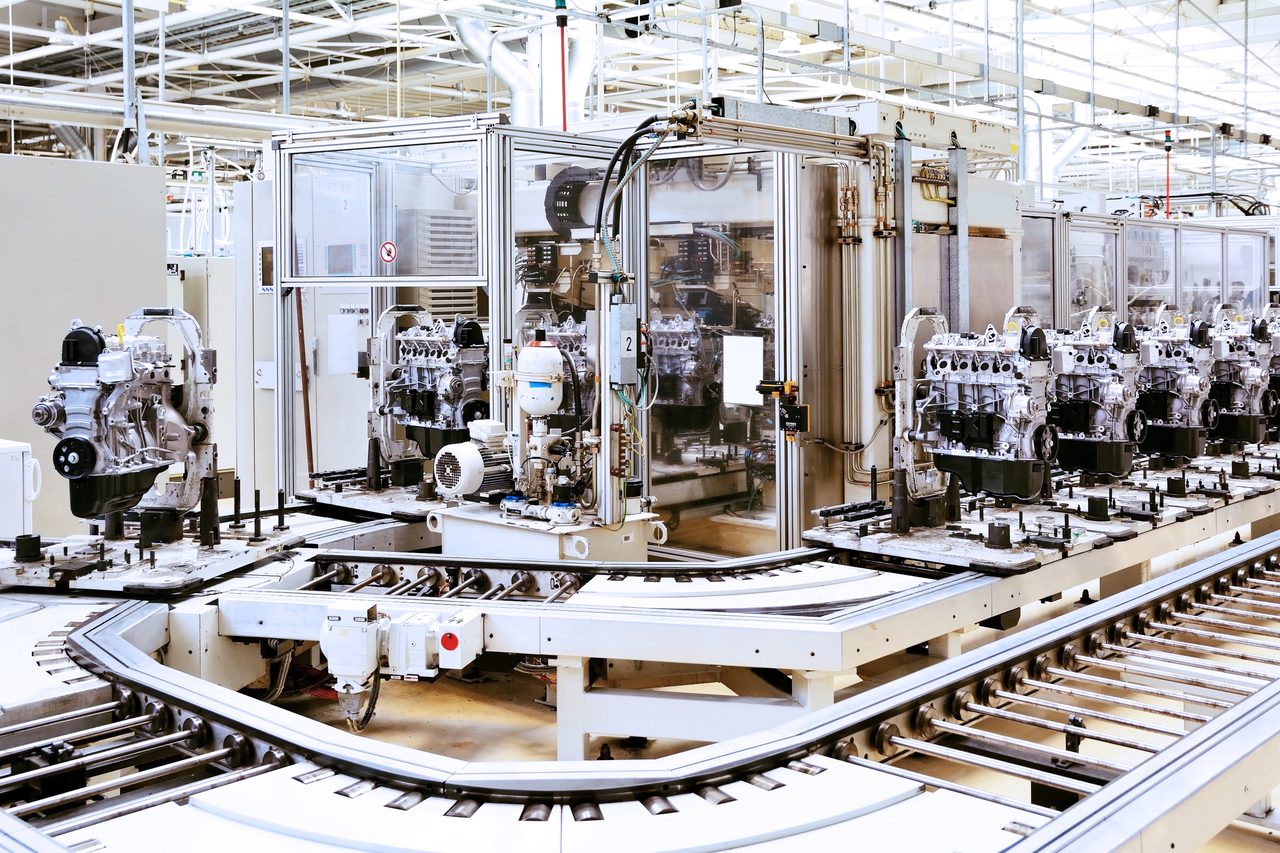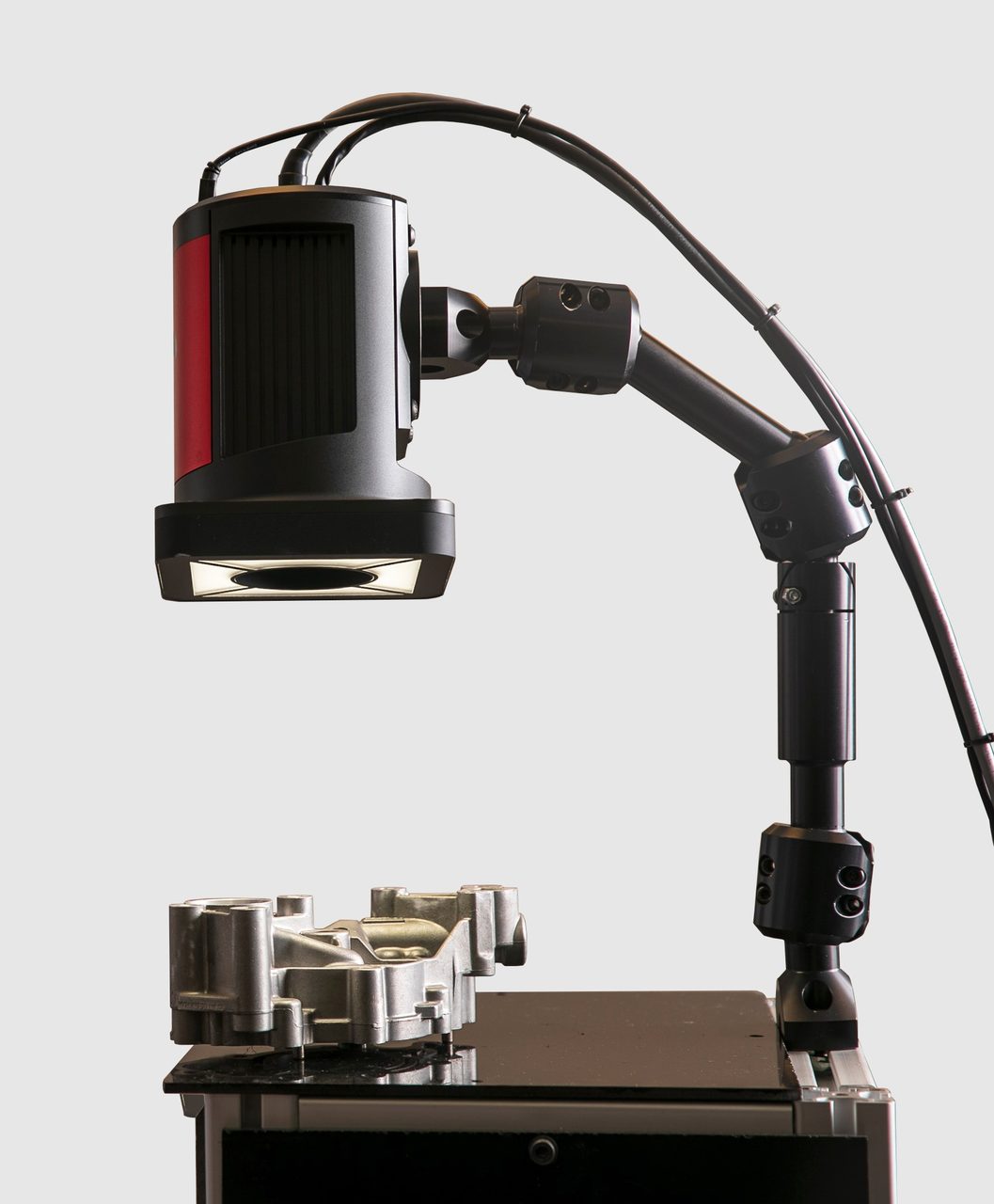Machine Vision
Machine Vision Systems
Vision & Sensors
V&S
The Evolution of
Quality Assurance
From human inspection, to automated, to autonomous.
By Ofer Nir
Machine vision for quality assurance (QA) has allowed manufacturers to overcome the limitation of human inspection in terms of cost and reliability. However, machine vision projects can be extremely complex and not suited to the technical and financial resources of most businesses. Now, autonomous machine vision has emerged as a new generation in quality assurance to merge the reliability of machine vision with the flexibility and cognitive capacities of human inspectors.
The cost of poor product quality is notorious — damage to a hard-earned reputation, erosion of customer trust, expensive recalls, material waste and reworking costs are just some of the consequences when products are not up to scratch. For this reason, quality assurance is a crucial step of every manufacturing process, regardless of industry size or sector.
Machine vision solutions provide manufacturers with a solution to the shortcomings of human-based quality assurance. Given that inspection can be a tedious and repetitive process, human inspectors can miss defects, making this an unreliable method that is not fit for the stringent quality requirements of today’s manufacturing.
Another common problem with human inspection QA is that it’s usually based on sampling, meaning that the majority of the products don’t undergo any QA process at all. Moreover, some products are simply too complex for the human eye to be reliably inspected. Think of a printed circuit board (PCB) as an example — with a huge array of visible components to check, an inspector could easily miss defects that compromise the overall product functionality.

Human inspection is not fit for the quality standards for Industry 4.0. Source: Shutterstock.
From human-based to automated
Machine vision solutions allow manufacturers to free up personnel and move them from monotonous inspection tasks to more productive roles that involve qualities humans excel at, such as problem-solving, critical thinking and complex dexterity.
Automating QA brings a series of advantages. The first is that automated solutions don’t get tired or bored, meaning that the quality of the inspection process stays unaltered from shift to shift, without changes due to fatigue or to different quality standards between one inspector and the other.
The second big advantage is that modern QA systems are sensitive enough to spot defects that might go unnoticed by the human eye. This is particularly relevant in industries such as electronics, where the integrity and correct assembly of complex items is critical to the product’s functionality.
However, conventional machine vision solutions come with a series of pain points — for each type of part (SKU) to be inspected, a tailored solution must be developed, meaning that components have to be selected, assembled and tested by an expert.
The solution must then be programmed and/or trained to recognize a set of known or predicted defects. The whole process can be extremely expensive and time-consuming, and usually requires the intervention of a machine vision expert.
Once the solution is assembled, trained and tested, it is ready to inspect the product it’s been built for. But what about unpredictable defects? Since machine vision solutions are trained to spot a specific set of defects, anything that falls out of the ordinary might be missed.
Moreover, for any production line changeover the whole assembly of the inspection system and programming/training process has to start all over again. The previous set up might not be suited to the new product. Even a mere change in the environmental conditions — for example different lighting — or any modification in the surroundings may require once more the intervention of a machine vision expert.
These characteristics significantly hinder the ability of conventional machine vision solutions, even with the emergence of multiple vision AI modules, to be deployed on a massive scale, and be applicable in highly engineered, low-changing production lines. These constraints are even more prominent with the growing pressures for agile smart manufacturing and the push towards high-mix/low-volume production.

This is an autonomous machine vision system. Source: Inspekto
From automated to autonomous
Autonomous machine vision (AMV) is a new category of machine vision for industrial QA that mimics the entire human vision process while retaining the reliability and repeatability of industrial machine vision. In AMV, the whole process is automated, not just the decision ‘defected/not-defected’ but all steps, starting from the image acquisition. The category is based on a novel architecture composed by a series of unique AI engines to automate every step that would normally require the intervention of an expert.
Just as the human brain adapts our single optical system — our eyes — to each scenario, AMV solutions adapt a single electro-optical system to fit a wide range of use-cases. As a result, these systems are not tailor-made, case-specific solutions, but off-the-shelf products that come pre-trained for a huge variety of use cases, so that the end users can easily install and deploy them independently and in a very short time.
The user does not need to specify the parameters for image capturing, like the distance between the camera and the sample item, lighting, focus value, shutter speed and exposure time — all of this will be automatically calculated and dynamically adjusted by the AMV system using its AI engines. All that’s left to do is present the system with 20 to 30 good sample items — no need for defective ones — so that it can learn the characteristics of the items to be inspected. This is very similar to how a human only needs to be shown a good part, and can then detect defects without prior definition.
This marks a new chapter in the evolution of industrial QA — from automated yet complex to deploy solutions, to autonomous self-setting, self-learning and self-adjusting systems that continually improve and are easy to deploy like never before.
The role of AI
The user-friendliness and immediacy of AMV systems are the result of autonomous machine vision artificial intelligence, a technology that combines three AI modules to mimic the human cognitive vision process end-to-end. The first AI engine is in charge of dynamically adapting the electro-optics system to capture an optimal image of the part to be inspected, the second recognizes the item, and the third inspects it for defects. At all stages, the AI modules effectively mimic the human brain’s ability to acquire and process images, compare new images to ones that have been previously memorized, and spot differences.
The first AI module dynamically controls the electro-optics components to acquire the best image possible of the item to be inspected. For example, thanks to LEDs arranged in several distinct regions, AMV systems can take several images with varying light direction and intensities and then fuse them together to create a single reflection-less HDR image.
This allows systems to take clear images for inspection even when working with highly reflective materials, such as metals and glossy plastics. The whole process is so fast that the human eye can see no flickering or light variation, meaning that workers can stand nearby without being disturbed by sudden light changes.
Once the best and most informative image of an item has been taken, two other AI-based engines spring into action. The second is the detection and dimensional alignment AI module. This allows the system to recognize the parts it sees in the live video stream from the camera and identify the best moment to acquire an image to perform the last task – inspection.
Like humans, AMV systems don’t need a long and complex training to be able to do this. In fact, for the image acquisition and recognition phases, the system only needs to see the part once to be able to recognize it, detect it, and perform alignment, and very few for the inspection decision.
Multiple deep learning and AI-based models keep appearing on the market like mushrooms after rain, yet these are very far from being autonomous. These AI algorithms have several attributes that significantly hinder their benefits: first, they require very large amount of case-specific data — hundreds or even thousands of sample images, both good and bad, in which the item is identified and defects are annotated and labelled. This can be very challenging, as it means presenting a sample for every possible defect in the item, which is something that most manufacturers simply can’t do for lack of available samples. Secondly, deployment is based on on-site training and re-training for each new input, commonly to be performed by machine vision experts and not the end-users themselves.
However, the AI inspection model can achieve prediction performance of any new object using just an average of 20 to 30 good samples and no defective ones. All images can be stored for future retrieval and can be consulted to challenge claims or optimize production processes and understand where and why defects happen.
With conventional machine vision solutions, manufacturers need huge production volumes to justify the cost and complexity of implementing a QA solution. Autonomous machine vision turns QA automation into an easy, affordable and accessible process, thus making it a viable step for manufacturers of every size, in every industry and at any point along their production process – from inspecting incoming goods to the inspection of the final product.
